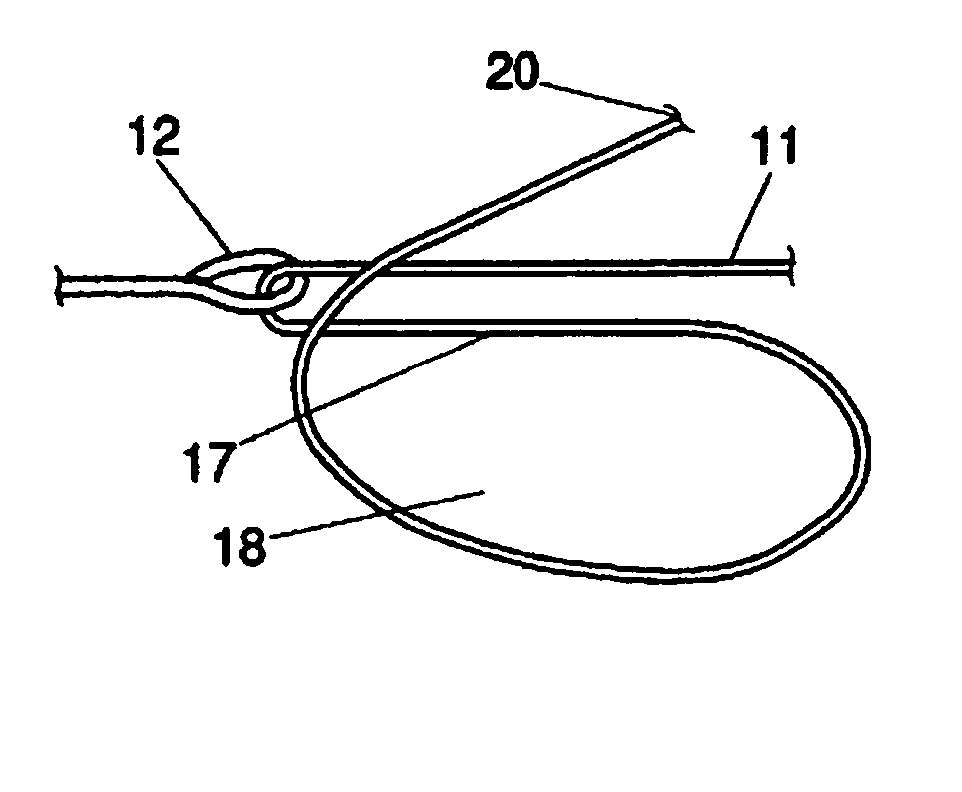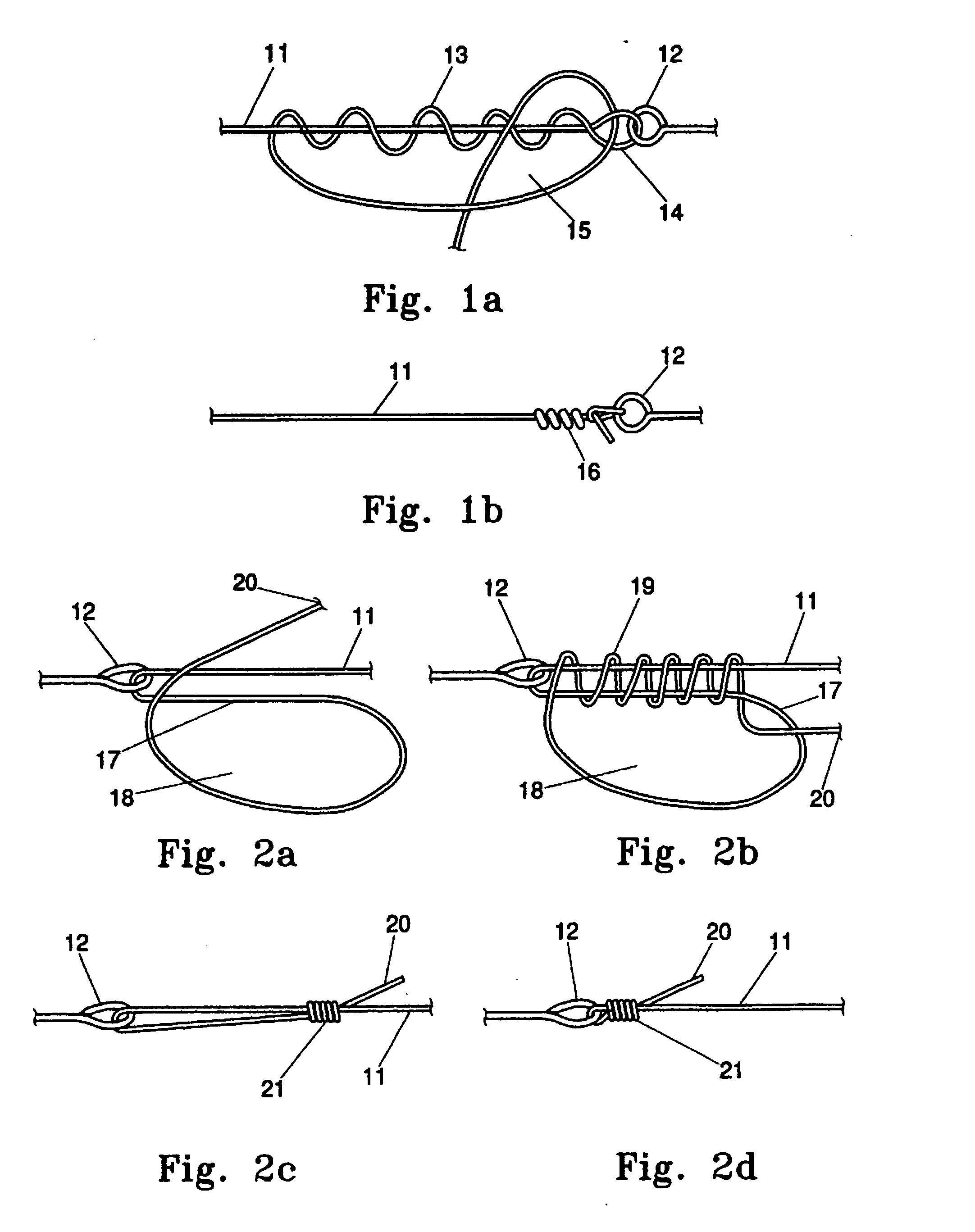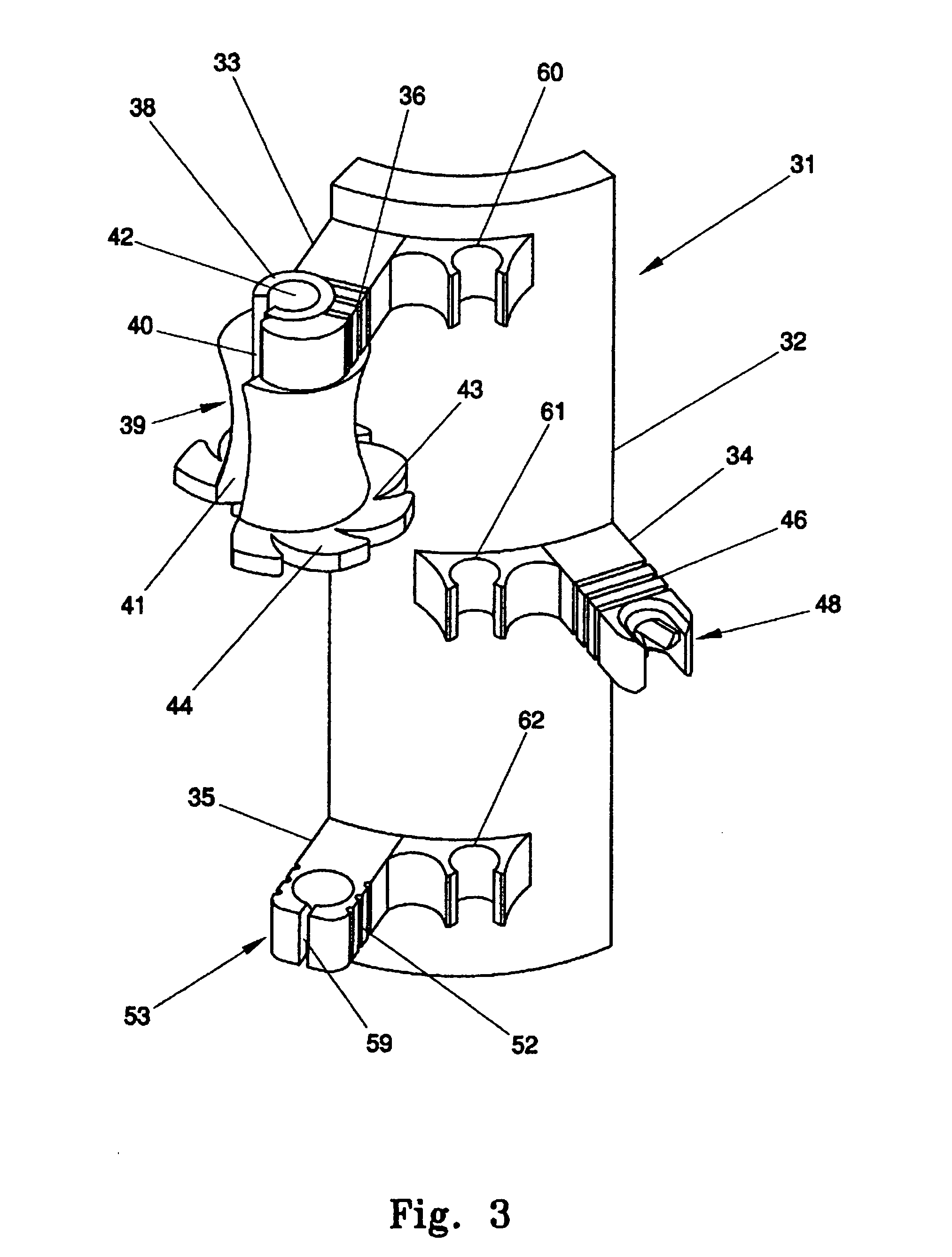Knot tying device
a knotting device and knotting technology, applied in fishing, weaving, textiles and papermaking, etc., can solve the problems of increasing the number of knots, reducing the breaking strain of the line, and slipping of the knot, so as to achieve the effect of breaking the line strength
- Summary
- Abstract
- Description
- Claims
- Application Information
AI Technical Summary
Benefits of technology
Problems solved by technology
Method used
Image
Examples
Embodiment Construction
[0106] FIGS. 1a and 1b shows bow a clinch knot is tied. The primary line 11 is passed through the eye 12 of a hook or swivel and doubled back upon itself making five turns 13 around the line 11. The end of the line 11 is then passed through the first loop 14, 10 above the eye 12, and then drawn through the large loop 15. The knot 16 is then drawn into shape and the coils thereof slid down tight against the eye 12, as shown in FIG. 1b. This knot however is likely to reduce the breaking strain of the line and is likely to slip.
[0107] A more useful knot as discussed above is the uni-knot or hangman's knot, the construction of which is shown in FIG. 2a to 2d. The line 11 in this case is passed through the eye of the hook 12 for at least 15 centimetres or so and folded back upon itself to form a return portion 17, thereby making two parallel lines. The end of the line 20 is then brought back towards the eye 12 of the hook to form a circle 18 as shown in FIG. 2a. As shown in FIG. 2b six t...
PUM
 Login to View More
Login to View More Abstract
Description
Claims
Application Information
 Login to View More
Login to View More - R&D
- Intellectual Property
- Life Sciences
- Materials
- Tech Scout
- Unparalleled Data Quality
- Higher Quality Content
- 60% Fewer Hallucinations
Browse by: Latest US Patents, China's latest patents, Technical Efficacy Thesaurus, Application Domain, Technology Topic, Popular Technical Reports.
© 2025 PatSnap. All rights reserved.Legal|Privacy policy|Modern Slavery Act Transparency Statement|Sitemap|About US| Contact US: help@patsnap.com



